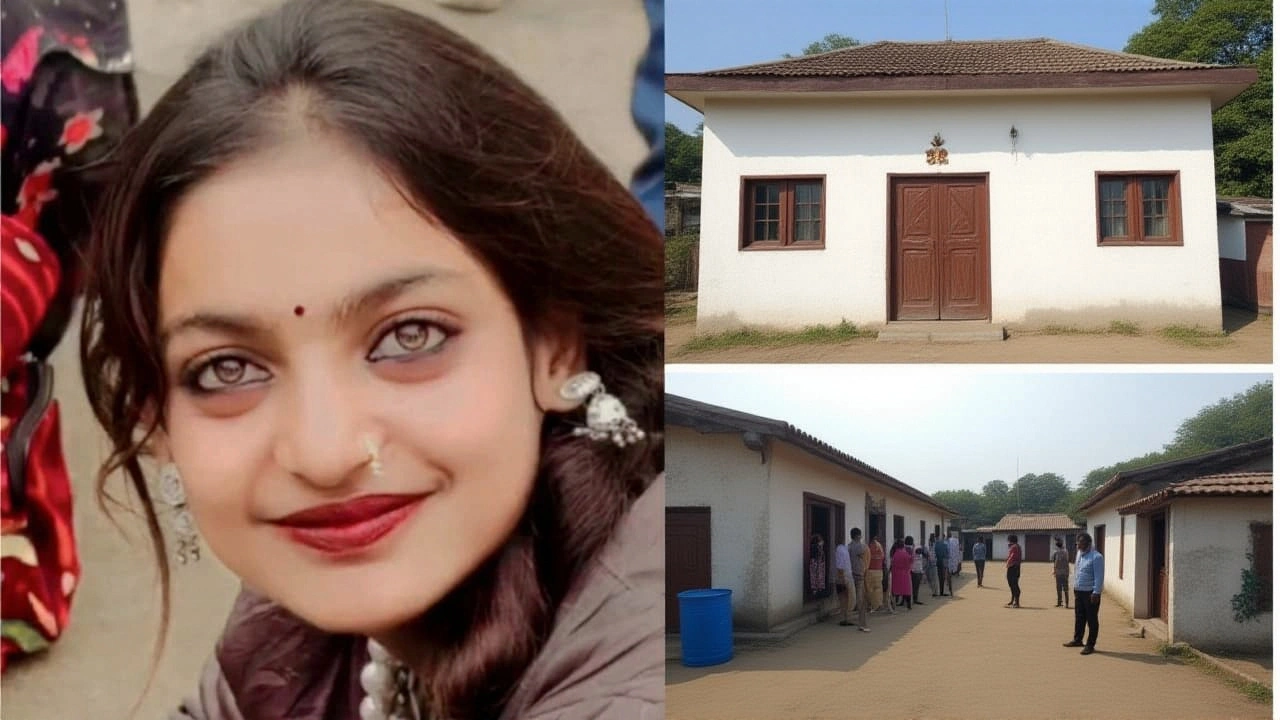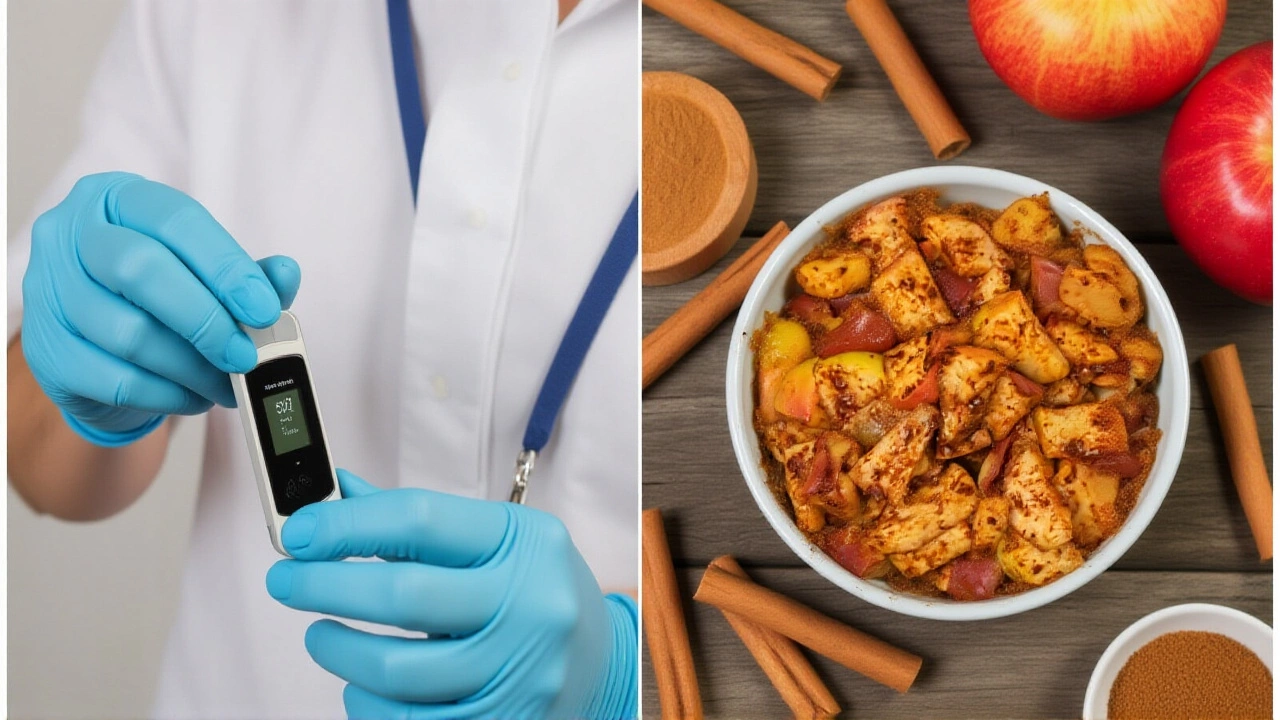When Shweta Panchal, a certified dietitian based in Delhi warned diabetic patients that eating roti and rice together can cause a rapid blood‑sugar spike, the message landed on diabetes forums across India on October 3, 2025. She delivered the advice at the National Nutrition ConferenceNew Delhi, where representatives from the Indian Diabetes Association were present. The core of her counsel: choose either roti or rice in a meal, not both, and pair carbs with high‑fiber foods to blunt glucose surges. For millions of Indians living with diabetes, the recommendation could reshape everyday plate‑building habits.
Why the roti‑rice combo spikes blood sugar
Both roti—made from refined wheat flour—and white rice are high‑glycemic staples. A 100‑gram serving of roti carries roughly 70 grams of carbohydrates and about 12 grams of protein, while the same weight of steamed white rice packs close to 78 grams of carbs and only 7 grams of protein. When these two foods are combined, the total carbohydrate load can exceed 140 grams in a single sitting, overwhelming the pancreas’ ability to release insulin efficiently.
"The glycemic index of each is already high, around 70–80," Panchal explained. "Together, they act like a double‑dose of fast‑acting glucose, pushing post‑meal blood‑sugar levels up by 30‑40 mg/dL compared with eating either one alone." Research from the All India Institute of Medical Sciences (AIIMS) in 2023 supports this claim, showing that mixed‑grain meals caused a 28 % greater rise in HbA1c over three months than single‑grain meals.
Practical tips from the dietitian
To keep glucose in check, Panchal suggests a simple rule: serve only one primary starchy item per plate. If you prefer rice, switch to brown rice or millet—options that contain 3–4 grams of fiber per 100 grams and a lower glycemic index (around 55). If roti is your choice, opt for whole‑wheat or multi‑grain versions that add 2–3 grams of fiber.
She also recommends beginning every meal with a small salad—about 50 grams of raw leafy greens, cucumber, and carrot—dressed lightly with lemon juice. The fiber slows carb digestion, flattening the glucose curve. Additionally, sprinkling a pinch of cinnamon powder on fruit desserts can modestly reduce the post‑prandial sugar spike, as cinnamon has been shown in a 2021 meta‑analysis to lower fasting glucose by 4 mg/dL on average.
What experts say about fiber and glycemic index
Dr. Rajiv Malhotra, a senior endocrinologist at the All India Institute of Medical Sciences, concurs with Panchal’s emphasis on fiber. "A daily intake of at least 25 grams of soluble fiber—found in oats, beans, and the skins of fruits—can improve insulin sensitivity by up to 15 %," he noted during a follow‑up interview on October 5, 2025.
Nutrition professor Anita Rao from the University of Mumbai added that the timing of carbs matters. "Eating the bulk of your carbohydrates earlier in the day, preferably before 7 p.m., gives the body more time to process glucose before sleep, reducing nocturnal hyperglycemia," she said.

Potential health pitfalls beyond sugar
Besides the obvious blood‑sugar concerns, the roti‑rice duet can strain the digestive system. The high‑carb load slows gastric emptying, leading to bloating, gas, and occasional acid reflux—symptoms many diabetics report after heavy dinner plates. Over time, chronic overeating of refined carbs can contribute to dyslipidemia, raising LDL cholesterol and increasing cardiovascular risk, which is already elevated in the diabetic population.
“When you combine two refined grains, you’re also missing out on essential micronutrients like magnesium and zinc,” Rao warned. “Those minerals help regulate insulin action, so their deficiency compounds the problem.”
Looking ahead: diet trends for diabetics
Industry analysts predict that Indian food manufacturers will soon expand low‑glycemic product lines—think quinoa‑based rotis, roasted chickpea flour mixes, and ready‑to‑cook brown‑rice packets. The Ministry of Health’s upcoming “Smart Plate” initiative, slated for rollout in early 2026, aims to label packaged foods with a simplified glycemic score, making it easier for patients to choose wisely.
Meanwhile, mobile health apps like GlucoTrack are integrating Panchal’s guidance into their meal‑logging algorithms, prompting users to avoid ‘dual‑grain’ entries and suggesting fiber‑rich swaps in real time.
Frequently Asked Questions
How does eating roti and rice together affect blood‑sugar levels?
Combining the two high‑glycemic foods can push a meal’s carbohydrate count past 140 grams, causing post‑meal glucose to rise 30‑40 mg/dL higher than if you ate just one. This rapid spike taxes insulin production and can worsen long‑term glycemic control.
What are the best alternatives to white rice for diabetics?
Brown rice, millets (such as pearl millet or finger millet), and quinoa offer more fiber and a lower glycemic index (around 50‑55). A 100‑gram serving of brown rice typically contains 3‑4 grams of fiber, which slows glucose absorption.
Can cinnamon really help control sugar spikes?
Several studies, including a 2021 meta‑analysis of 12 trials, show that sprinkling a pinch of cinnamon on fruit or oatmeal can lower fasting glucose by about 4 mg/dL. It’s a modest aid, not a substitute for a balanced diet or medication.
How often should diabetics include roti or rice in their meals?
Panchal recommends limiting the combined intake to once a day—either roti or rice, not both. Pair the chosen grain with plenty of non‑starchy vegetables and a source of lean protein to create a balanced plate.
What role does fiber play in managing diabetes?
Fiber slows carbohydrate digestion, which flattens the post‑meal glucose curve. Adults with diabetes should aim for at least 25‑30 grams of fiber daily, sourced from whole grains, legumes, fruits, and vegetables.
